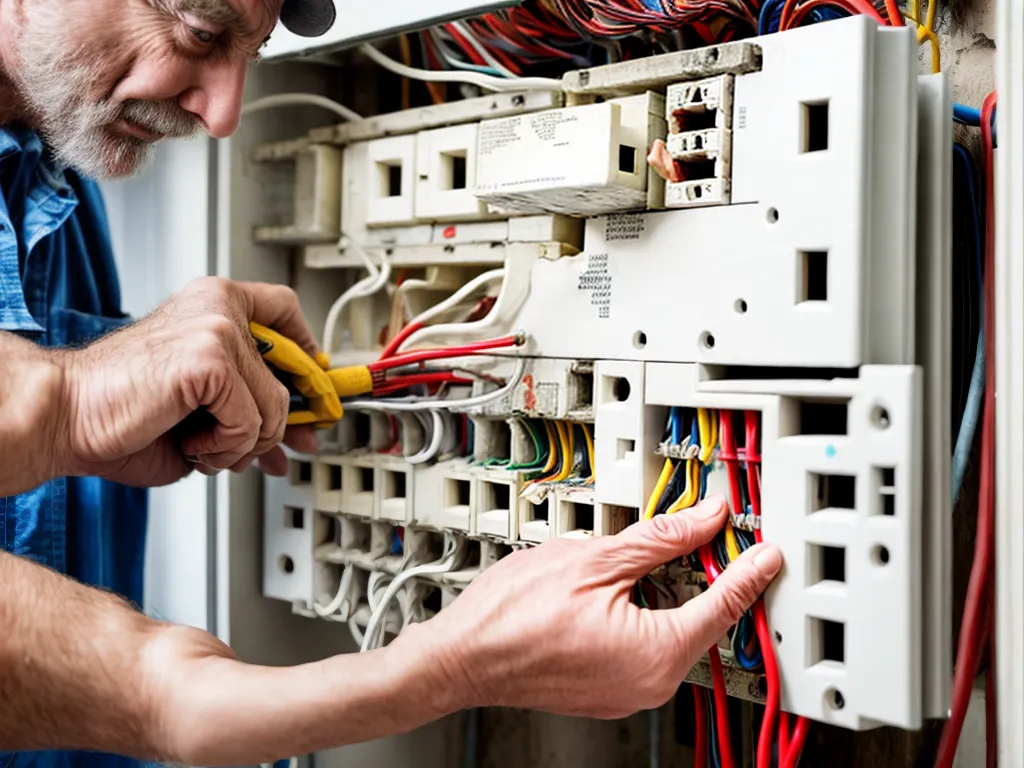
How to Replace Electrical Panels in Older Homes
Introduction
Replacing an electrical panel in an older home can seem daunting, but with proper planning and safety precautions, it's a do-it-yourself project that can save thousands of dollars. As the homeowner, I'll walk you through the complete process of replacing an electrical panel, from deciding when it's time to upgrade to installing the new panel and making the final connections. Having upgraded the electrical panels in my last two homes, I've learned a lot about what works and what to watch out for. Follow along as I share my tips and experience to help you take on this project with confidence.
When Is It Time to Upgrade the Electrical Panel?
Knowing when it's time to replace your electrical panel is the first step. Here are some signs that indicate an upgrade is needed:
-
Frequent tripping of breakers or blown fuses: If circuits trip or fuses blow often, it could mean the panel is overloaded and can't handle the household electrical demand. This is a major warning sign.
-
Not enough circuits or spaces for breakers: Older panels often have very limited space for breakers, like 8-12 slots. Modern homes need more circuits for all the outlets, lights, and appliances.
-
Old or faulty breakers: Breakers do wear out over time. If they don't switch smoothly or the handles are worn/broken, replacement is needed.
-
Aluminum wiring: Outdated aluminum wiring should be inspected; upgrading the panel provides an opportunity to re-wire questionable connections.
-
No spare breaker spaces: At minimum, a panel should have 2 open slots for future expansion or additions. If no spaces remain, an upgrade is required.
I recommend replacing panels older than 40 years. The improvements in safety and capacity will be well worth the investment.
Choosing the New Panel
Once I've decided it's time for a new panel, choosing the right replacement involves a few key factors:
-
Service amperage: The new panel must match the existing electrical service size, such as 100 amps or 200 amps. This is a must.
-
Number of circuit spaces: I determine how many circuits are needed based on the home's size and electrical requirements. Add a few spare spaces too.
-
Safety certifications: Look for panels that are ETL or UL listed for safety. Stick with major brands like Square D or Eaton.
-
Main breaker or fuse: Choose a main circuit breaker panel over old-style fuse boxes. Breakers are safer.
-
Aluminum wiring: If the home has aluminum wiring, get a COPALR listed panel that works safely with it.
Also consider surge protection, ground bus bars, and conduit knockouts for a professional installation.
Turning Off Power and Removing Old Panel
With the new panel purchased, I'm ready to replace the old unit. Safety is critical when working with a home's electrical system. Here are the steps I follow:
Shutting Off Power
-
I check the main breaker or pull the main fuse to turn off power to the entire panel.
-
For good measure, I turn off the individual breakers as well.
-
Using a non-contact voltage tester, I verify power is off at the panel and outlets.
Removing the Old Panel
-
I disconnect the ground wires and neutral wires from the panel bus bars.
-
Next are the live wires - I carefully detach each circuit's hot wire. I mark or label them to stay organized.
-
I unscrew the panel from the wall and detach any remaining conduit or fittings.
-
If possible, I leave the existing mounting bracket or base in place to make installing the new panel easier.
Installing the New Panel
Here are the steps to install the upgraded electrical panel:
Mounting the New Panel
-
I like to place the new panel in the exact same spot. I use the original mounting holes if possible.
-
Alternatively, I can mount a new bracket and carefully measure to center the panel on the wall.
-
I drill new mounting holes if needed. Having a helper makes this easier.
Wiring the Panel
-
I remove any knockout plugs for the wiring conduits.
-
One at a time, I attach the circuit wires to the new breakers or fuse clips, matching each hot wire with the corresponding neutral/ground.
-
It's critical to precisely match the wire size and amperage rating for each circuit.
-
I neatly organize the wires and allow slack for future maintenance.
-
Double checking connections as I go prevents any mistakes. Take it slow.
Finishing Touches
-
Once wired up, I securely fasten the panel to the wall with lag bolts.
-
The grounding wire and conduit fittings are re-attached per codes.
-
I carefully close up the dead front panel so no wires are exposed.
-
I affix labels noting the panel's amperage and voltage rating.
Restoring Power and Testing the New Panel
The final and most important stage is energizing the upgraded panel:
-
I remove any safety tags on the main breaker or fuse then restore power to the panel.
-
Moving methodically circuit-by-circuit, I switch on each new breaker and verify the lights or outlets are operating normally.
-
I check for any signs of hot wires or overload with my non-contact tester.
-
Once all circuits are energized, I turn loads on sequentially to test the main breaker capacity.
-
If all checks out, I install the dead front cover for safety.
With the panel replacement complete, I can relax knowing the electrical system is totally up-to-date and running safely. Taking my time and adhering to proper procedures ensures my home's electrics are protected for decades to come.